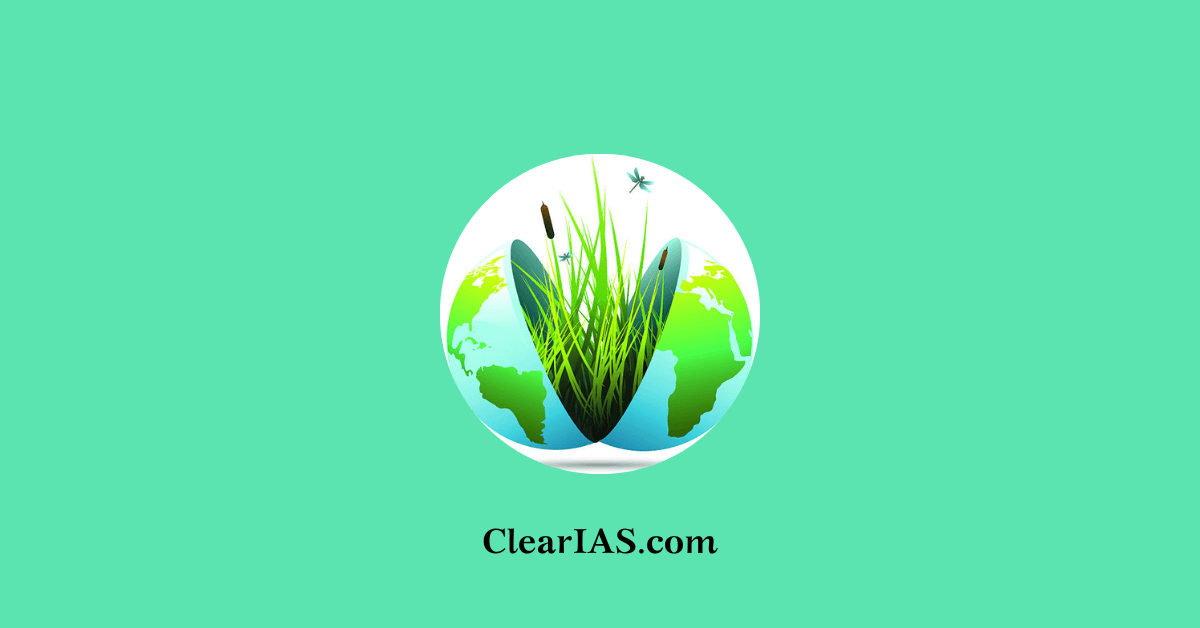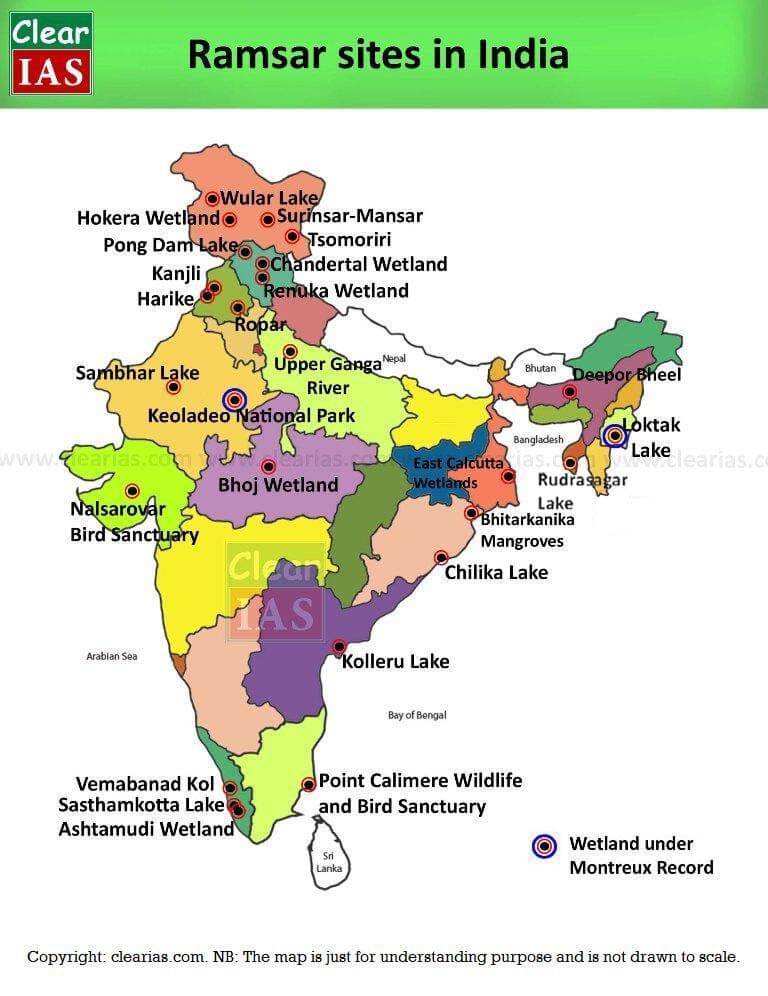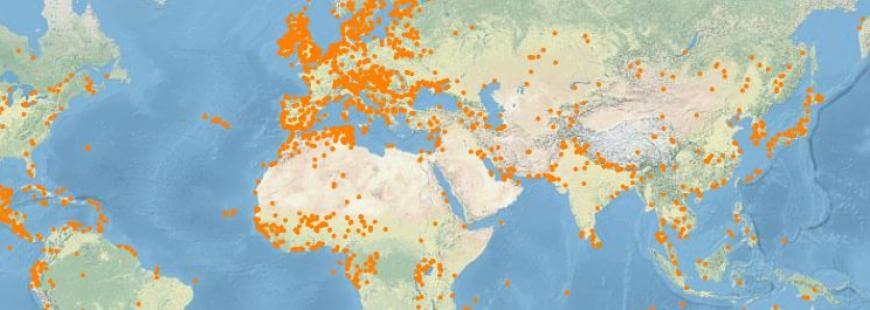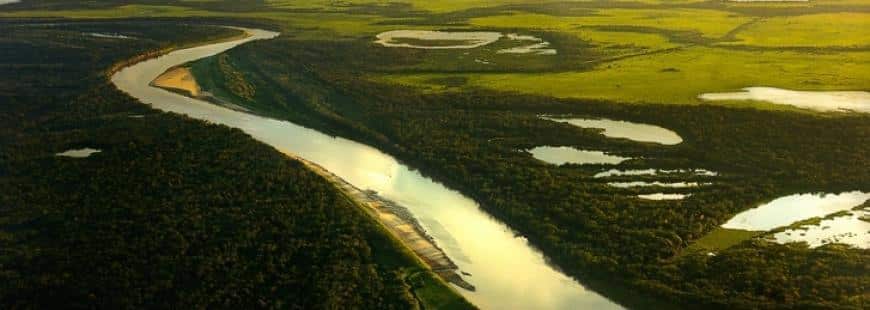
A wetland is a place where the land is covered by water. Marshes, ponds, the edge of a lake/ocean, the delta at the mouth of a river, low-lying areas that frequently flood — all of these are wetlands.
Wetlands of international importance are also known as Ramsar sites.
Why wetlands are called ‘Ramsar sites’?
Ramsar is a city in Iran. In 1971, an international treaty for the conservation and sustainable use of wetlands was signed at Ramsar. The Convention’s mission is “the conservation and wise use of all wetlands through local and national actions and international cooperation, as a contribution towards achieving sustainable development throughout the world”.
More than 2300 wetlands of international importance!

- Today, the Ramsar List is the world’s largest network of protected areas.
- There are currently over 2,300 Ramsar Sites around the world. They cover over 2.5 million square kilometers, an area larger than Mexico.
- The world’s first Site was the Cobourg Peninsula in Australia, designated in 1974.
- The largest Sites are Ngiri-Tumba-Maindombe in the Democratic Republic of Congo and Queen Maud Gulf in Canada; these Sites each cover over 60,000 square kilometers.
- The countries with the most Sites are the United Kingdom with 175 and Mexico with 142.
- Bolivia has the largest area with 148,000 km2 under Ramsar protection.
Ramsar sites (Wetlands) in India: State-wise compilation
State/Union Territories |
Ramsar Wetland sites |
Jammu and Kashmir |
Hokera Wetland Surinsar- Mansar lakes Wular lake Tsomoriri Lake Hygam Wetland Conservation Reserve Shallbugh Wetland Conservation Reserve |
UT of Ladakh |
Tso Kar Wetland Complex |
Punjab |
Beas Conservation Reserve
Harike Wetlands Kanjli Wetland Keshopur-Miani Community Reserve Nangal Wildlife Sanctuary Ropar Wetland |
Himachal Pradesh
|
Chandra Taal
Pong Dam Lake Renuka lake |
Uttarakhand |
Asan Barrage |
Rajasthan
|
Keoladeo National Park
Sambhar Lake |
Uttar Pradesh
|
Nawabganj Bird Sanctuary
Parvati Agra Bird Sanctuary Saman Bird Sanctuary Samaspur Bird Sanctuary Sandi Bird Sanctuary Sarsai Nawar Jheel Sur Sarovar Upper-Ganga River (Brijghat to Narora Stretch) Haiderpur Wetland Bakhira Wildlife Sanctuary |
Bihar |
Kanwar Lake or Kabal Taal
Nagi Bird Sanctuary Nakti Bird Sanctuary |
West Bengal
|
East Kolkata Wetlands
Sunderban Wetland |
Odisha
|
Chilika Lake
Bhitarkanika Mangroves Satkosia Gorge Tampara Lake Hirakud Reservoir Ansupa Lake Yashwant Sagar |
Madhya Pradesh
|
Bhoj Wetlands
Sirpur wetland Sakhya Sagar Yashwant Sagar Tawa Reservoir |
Gujarat |
Nalsarovar Bird sanctuary
Thol Lake Wildlife Sanctuary Wadhvana Wetland Khijadia Wildlife Sanctuary |
Maharashtra |
Nandur Madhameshwar
Lonar Lake Thane Creek |
Andhra Pradesh |
Kolleru lake |
Tamil Nadu
|
Point Calimere Wildlife and Bird Sanctuary
Koonthankulam Bird Sanctuary Karikili Bird Sanctuary Pallikaranai Marsh Reserve Forest Pichavaram Mangrove Gulf of Mannar Marine Biosphere Reserve Vembannur Wetland Complex Vellode Bird Sanctuary Vedanthangal Bird Sanctuary Udhayamarthandapuram Bird Sanctuary Chitrangudi Bird Sanctuary Suchindram Theroor Wetland Complex Vaduvur Bird Sanctuary Kanjirankulam Bird Sanctuary Karaivetti Bird Sanctuary Longwood Shola Reserve Forest Nanjarayan Bird Sanctuary Kazhuveli Bird Sanctuary Sakkarakottai Bird Sanctuary Therthangal Bird Sanctuary |
Kerala |
Vembanad Kol Wetland
Sasthamkotta lake Ashtamudi Wetland
|
Assam |
Deepor Beel |
Tripura |
Rudrasagar Lake |
Manipur |
Loktak lake |
Haryana |
Sultanpur National Park
Bhindawas Wildlife Sanctuary |
Karnataka |
Ranganathituu BS
Magadi Kere Conservation Reserve Ankasamudra Bird Conservation Reserve Aghanashini Estuary |
Goa |
Nanda Lake |
Mizoram |
Pala wetland |
Sikkim |
Khecheopalri Wetland |
Jharkhand |
Udhwa Lake |
Three pillars of the Ramsar Convention

Under the “three pillars” of the Convention, the Contracting Parties commit to:
- work towards the wise use of all their wetlands;
- designate suitable wetlands for the list of Wetlands of International Importance (the “Ramsar List”) and ensure their effective management;
- cooperate internationally on transboundary wetlands, shared wetland systems, and shared species.
The Montreux Record
The Montreux Record is a register of wetland sites on the List of Wetlands of International Importance where changes in ecological character have occurred, are occurring, or are likely to occur due to technological developments, pollution, or other human interference. It is maintained as part of the Ramsar List.
Also read: Ramsar Sites In India
Interesting facts about Ramsar Convention/Sites

- The number of contracting parties is 171.
- When joining the Convention, each Contracting Party undertakes to designate at least one wetland site for inclusion in the list of Wetlands of International Importance.
- Including a “Ramsar Site” in the List embodies the government’s commitment to take the steps necessary to maintain its ecological character.
- Wetlands included in the List acquire a new national and international status: they are recognized as being of significant value not only for the country or the countries in which they are located but for humanity as a whole.
- There are nine criteria for identifying wetlands of international importance.
- There are six Ramsar regions.
- The 2nd of February each year is World Wetlands Day, marking the date of the adoption of the Convention on Wetlands on 2 February 1971.
- The Ramsar Sites Information Service (RSIS) is a searchable database that provides information on each Ramsar Site.
- The Ramsar Convention works closely with six other organizations known as International Organization Partners (IOPs). These are:
- Birdlife International.
- International Union for Conservation of Nature (IUCN).
- International Water Management Institute (IWMI).
- Wetlands International.
- WWF International.
- Wildfowl & Wetlands Trust (WWT).
Compiled by: Yuvaalex






Thank you sir…..very nice article.
Nice article thanks clear IAS .I will try to buy its precious study materials
The free online study materials for UPSC CSE published by ClearIAS are not exhaustive. You need to supplement the same with UPSC exam preparation books, newspapers, NCERT books etc. To boost your marks for UPSC Prelims, we advise you all to enroll for ClearIAS Prelims test series, which offers high-quality questions and all-India test-platform. We prepare free notes on the most important topics for IAS exam, and these notes are updated as per the latest syllabus of UPSC. We hope our study-materials to give your right direction and will help you to understand difficult concepts faster.
Easy to remember. Thanks
its not hokera its hokersar wetland in jammu and kashmir
Nice Article sir….thank you clear ias
Superb information ! Great work !
Tqq sir
Thanku sir ji
Thank you sir.. It was very informative…Thank you for the service 👍😊👏
This article was very memorable
I see that you people don’t reply to emails, please share other contact details.
This article was very memorable
AND IF YOU WANT TO CRACK OTHER GOVT EXAM THEN VISIT OUR WEBSITE:- http://WWW.GKDUNIYA.IN
nalsarovar is in Gujarat not MP